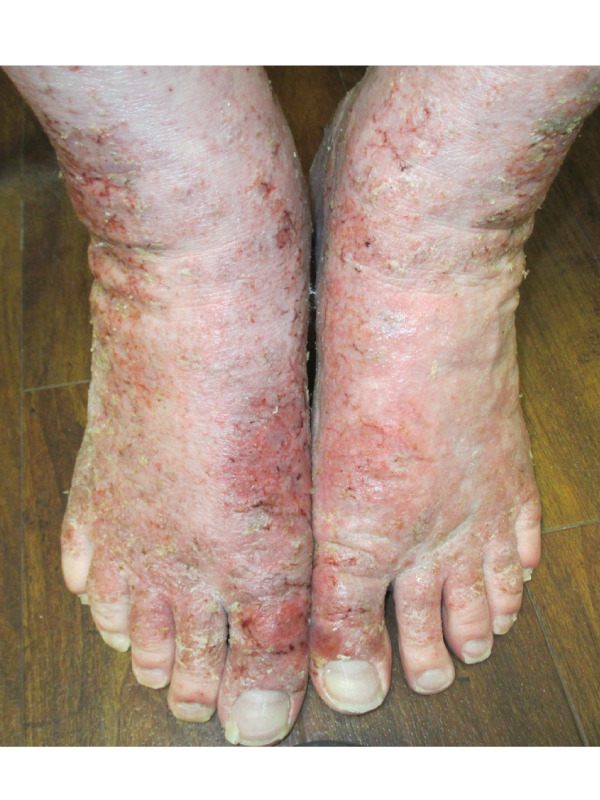2376-0249
Case Blog - International Journal of Clinical & Medical Images (2015) Volume 2, Issue 4

Author(s): Alexander KC Leung* and Benjamin Barankin
A 46-year-old man presented with chronic, pruritic, erythematous excoriated plaques on the legs and dorsa of the feet for the past 3 to 4 years. Yellow-brown “stuck-on” crusts and superficial erosions were observed in some of the affected areas. The rash had changed from being pruritic to being painful in the past week. He also had arthritis of the knees and pitting of the nails. This patient had impetiginized psoriasis. Plaque psoriasis or psoriasis vulgaris is characterized by sharply demarcated erythematous plaques with adherent silvery micaceous scales. Removal of the scales results in fine punctate bleeding, which is referred to as the Auspitz sign. The lesions are usually symmetrically distributed and pruritic. Seronegative inflammatory arthritis (“psoriatic arthritis”) develops in about 10 to 30% of patients. Many patients eventually develop nail involvement that includes pitting, discoloration, onycholysis, or onychodystrophy. Because psoriatic lesions are pruritic, scratching of the lesions may lead to excoriations and secondary bacterial infection with Staphylococcus aureus and group A β-hemolytic streptococci.
Yellowish-brown or honey-colored ‘stuck-on’ crust over the superficial erosion is the hallmark of impetigo, and often pain is a new symptom. For psoriasis, topical medications such as corticosteroids, calcipotriene or calcipotriol, retinoids, or immunomodulators are commonly prescribed as initial therapy. Narrow band UVB phototherapy or photochemotherapy psoralen UVA (PUVA), either alone or in combination with other topical remedies, should be considered for widespread or severe psoriasis. Newer biologic and small-molecule agents are also effective therapies for more extensive involvement and/or in the presence of psoriatic arthritis. Topical antibiotics such as mupirocin and fusidic acid three times a day are the preferred first-line therapy for impetiginized lesions. For severe, widespread, or recurrent infections, oral antimicrobials effective against Staphylococcus aureus and group A β-hemolytic streptococci should be used. The medications of choice include dicloxacillin, amoxicillin/clavulinic acid, clarithromycin, azithromycin, and cephalosporins such as cephalexin. Swab for culture and sensitivity should be considered to guide therapy and to identify and treat resistant strains accordingly.
 Awards Nomination
Awards Nomination

